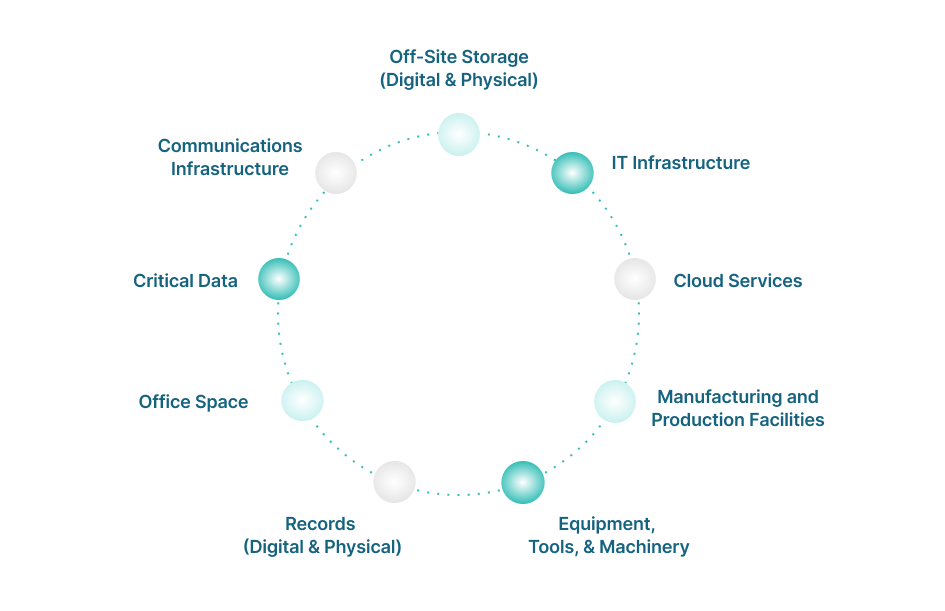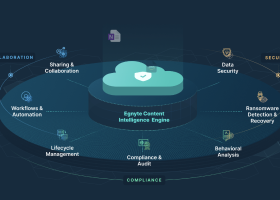What Is Business Continuity? Introduction and Guide
Business continuity is a business’s level of readiness to maintain critical functions after a disaster or disruption. It involves an organization’s ability to ensure that operations and core business operations are supported.

Business continuity includes creating prevention and recovery systems to help organizations adapt to events and function optimally during external or internal threats. Business continuity is interdepartmental, but is often led by IT.
Five Reasons to Plan for Business Continuity
- 1. Identify essential remote tools and systems needed for employees to work remotely in the event that work locations are inaccessible.
- 2. Identify vulnerabilities and potential points of failure during the risk assessment process.
- 3. Improve resiliency by having systems, tools, and processes in place and ready to support the execution of the business continuity plan.
- 4. Protect the organization's reputation by facilitating rapid and efficient responses to unexpected downtime.
- 5. Save money by reducing time to recovery and mitigating lost revenue caused by downtime. Also, having tools in place before an incident eliminates costly last-minute purchases and time-intensive implementations.
What Is a Business Continuity Plan?
A business continuity plan (BCP) is a document that outlines how a business will continue operating during an unplanned disruption in operations. More comprehensive than a disaster recovery plan, a business continuity plan includes contingencies for every aspect of a business that could be affected, such as business processes, assets, human resources, and supply chains.
A key component of a business continuity plan is IT resilience. This covers how to handle disruptions to cloud-based applications and services, networks, servers, computers, and mobile devices. The business continuity plan should have processes and procedures for reestablishing productivity for both online and offline workarounds.
Business Continuity Basics
A business continuity plan is a playbook that is used when there is a threat to business continuity. It details the steps that need to be taken, by whom, and when along with information about supporting systems and tools.
Three common drivers for putting a business continuity plan in place are:
- 1. Customers want it.
- 2. Regulators require it.
- 3. Senior management and the board of directors understand the need for it.
A business continuity plan forces a company to think through the ramifications of an unexpected disruption in operations; it also shores up confidence in the organization’s ability to respond and recover.
What Business Continuity Includes
The components of a business continuity plan include:
- Strategy
- Policy, purpose, and the plan’s scope
- Goals and objectives
- Outline of strategies that will be used by the business to continue day-to-day activities
- Schedule for testing, reviewing, and updating the plan
- Organization
- Key roles and responsibilities to execute the plan
- List of tasks required to keep operations flowing
- Contact information of management personnel
- Documentation of the structure, skills, communications, and responsibilities of its employees
- Applications and data
- Inventory of applications necessary to enable business operations
- Details about how to access applications remotely
- Information about data backups
- Technology
- Inventory of servers
- Network details
- Facilities
- Alternate work site(s)
- Support for remote workers

Roles and Responsibilities
There are many reasons to take the time to define roles and responsibilities for the team that will be responsible for executing a business continuity plan. Defining key roles enables your organization’s leadership team to:
- Assist departments in assigning a member to business continuity teams
- Ensure the right individuals are in the right roles
- Identify any gaps in knowledge, skills, and abilities of team members
- Make it clear to team members what they will need to do
- Provide team members with the resources they will need in the event of a disruption
Selection Criteria for the Business Continuity Team
When considering employees for roles on the business continuity planning team, ensure that they:
- Understand the role and responsibilities that are being assigned.
- Have the skills and temperament to fulfill their assignments, including the ability to make decisions effectively in high-stress situations.
- Are able to take on the additional work without impacting their primary role in the organization.

Executives’ Roles in the Business Continuity Plan
A business continuity plan should be owned and overseen by representatives from senior management. The executive team for a business continuity plan should include:
- Head of finance or chief financial officer (CFO), because they have broad visibility across the organization and understand the financial impact of disruption.
- Head of operations or chief operations officer (COO), because they understand the processes, systems, and people that need to be taken into consideration in the event of a disruption, both to execute the business continuity plan and to resume normal operations during recovery.
Although IT is heavily involved in the execution of the business continuity plan, the head of IT or chief information officer (CIO) should not be part of the business continuity executive team. This avoids creating the impression that the business continuity plan is IT-centric when, in reality, it is a company-wide effort.
Regardless of who owns the program, it is important to gather input from leadership in all groups to ensure that the business continuity plan addresses all of their needs. Cross-functional input also gives the team that is putting the plan together:
- Another point of view
- Insight into how members of their team could perform their required business continuity tasks
- Strategic input for the program
- Support and buy-in for the overall plan
- Validation of scope related to their functional area(s)
Business Continuity Process
Step 1: Assess risks
- Define what systems and tools would be impacted
- Evaluate the threats of disaster or disruption and potential impacts
- Identify existing internal vulnerabilities
Step 2: Define a team
- Create a core business continuity team that includes:
- Communications
- Executive leaders
- Facilities
- Human resources
- IT
- Develop a clear decision-making hierarchy
- Establish roles and responsibilities for team members
Step 3: Develop a plan
- Base the plan on worst-case scenarios
- Establish the minimum resources required to reestablish operations—people, services, facilities, and equipment
- Prioritize essential operations, who will perform them, and how work will be redirected if key people are unavailable
- Detail remote work, manual processes, communications requirements, or alternate facilities that can be put into play as needed
- Determine how employees will work remotely in the event of a prolonged closure of workplaces
- Develop detailed documentation of the plans, including how to implement them
Step 4: Test the plan
- Perform exercises to confirm that the plans and strategies will work as expected
- Conduct full emergency simulations, including crisis communications, safety drills, and workplace recovery processes
- Identify and address gaps and required changes
Step 5: Create a crisis communications strategy
- Establish emergency notification procedures—media, employees, customers, vendors, regulators, and partners
- Prepare scripted communications that can be easily updated and ready to transmit immediately—for all relevant media, including phone, email, text, social media, and television
Step 6: Educate staff and train team
- Educate staff on the processes they should follow in the event of an emergency
- Train business continuity team
- Create a resource center where staff can find information about the plan and key contact information
Step 7: Maintain the plan
- Review plan and update with any changes to team members and contacts
- Update plan to reflect changes to systems and applications
Examples of Business Continuity Considerations
- Loss of Applications
Manual workarounds, alternate solutions, alternative communications approaches - Loss of Facility
Secondary locations, remote work capabilities - Loss of People
Cross-functional employees, third-party contractors - Loss of Suppliers
Alternate vendors, in-sourcing activities, safety stock of supplies
Threats to Business Continuity
Unexpected events present threats to business continuity. There are innumerable threats, but here are the most common examples:
- Act of terrorism
- Adverse weather
- Availability of talent or key skills
- Criminal event at the workplace
- Critical infrastructure failure
- Cyberattack
- Data breach
- Equipment failure
- Interruption to utility supply
- IT and telecom outage
- Natural disaster
- New laws or regulations
- Political change
- Reputation incident
- Security incident
- Staff turnover
- Supply chain disruption
Business Continuity Best Practices
- Define methods of communication with team members.
- Define roles, responsibilities, and contact information of those involved.
- Develop and implement a business continuity awareness and training program.
- Document assumptions related to resource availability or prioritization following a disruption.
- Document contractual obligations, including service level agreements.
- Ensure that the business continuity plan is always in a state of readiness.
- Ensure that the business continuity plan is in compliance with pertinent government laws and regulations, as well as industry regulations.
- Establish an executive committee to define the scope, provide ongoing support and direction, and allocate budget for the business continuity plan.
- Identify alternate work locations.
- Issue an organization-wide business continuity policy.
- Understand stakeholder requirements.
Prior Planning Prevents Poor Performance
Don’t take the risk of being caught off-guard; disasters and disruptions can happen at any time. Educate other leaders about the importance of business continuity and develop a plan. A well-thought-out business continuity plan will expedite resumption to normal operations while recovery efforts are underway, which minimizes the impact on the business.
Explore the many options to support the execution of a business continuity plan. For example, cloud solutions make it easy to work remotely, and there are business-continuity-as-a-service options available.
Egnyte has experts ready to answer your questions. For more than a decade, Egnyte has helped more than 16,000 customers with millions of customers worldwide.
Last Updated: 25th August, 2021



